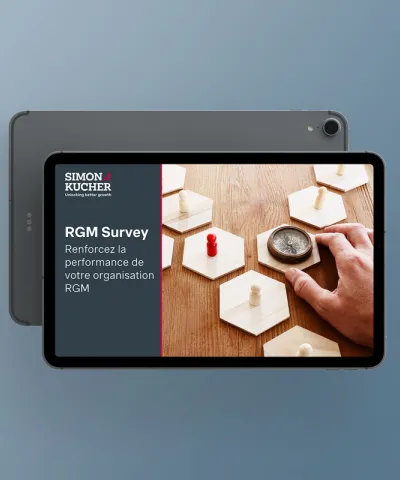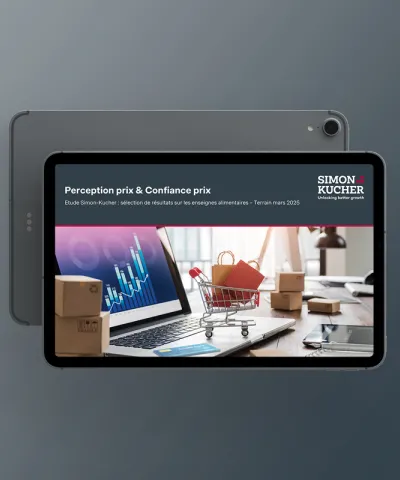The healthcare industry is fraught with challenges that medtech suppliers are currently grappling with. The effects of the COVID-19 pandemic, cost pressure and consolidation, competitive dynamics, and a deteriorating innovation climate have turned the industry upside down. So, what can medtech companies do to succeed in this environment, and what should be at the top of their commercial agendas this year and going forward? They must evolve or even revolutionize their business model.
The medtech industry has traditionally experienced significant growth driven by a continuous launch of innovations. However, limited payer and provider budgets have led to decreased willingness to pay, and increased acceptance of products considered “good enough.” Furthermore, the effects of the COVID-19 pandemic on sales mobility and interactions have forced companies to digitally rethink their engagement models.
COVID-19 as a catalyst for change
The overall optimistic outlook of the medtech industry quickly worsened during the onset of the COVID-19 crisis. The pandemic created disruptions for the whole industry with the extent of its impact depending on the treatment area and nature of products sold. Many sectors have returned to their pre-COVID-19 sales levels; nevertheless, the effects of the pandemic on business models will be long lasting. Dealing with increased costs, inflation, delayed investments, overburdened staff, changing engagement models, shifts in population priorities and now the effects of the Ukraine-Russia crisis will keep the industry busy for some time.
The COVID-19 pandemic should not be seen as the sole reason for companies to evolve and revolutionize their business models. However, the impact of this health crisis has brought attention to existing problems and trends. It is now time to look ahead, professionalize existing business procedures, and explore new avenues for profitable growth.
Time to change the business model
The market is currently in flux, and to succeed, companies have to rethink their commercial approaches. Our pre-COVID Medtech Barometer (2018) shows that 80 percent of medtech companies have started to adapt (or are considering adapting) their business models in certain areas. However, traditional commercial approaches are still the norm.
While traditional approaches may still support short-term goals, given the degree of changes in recent years, they will not suffice to excel in the industry. If continued success is the goal, companies must adapt their business models and adjust their commercial approaches.

Evolve: Professionalize your existing business
Reassessing and challenging established commercial practices is the first step in evolving your business model to the changing market environment. Here are five leading commercial topics that every medtech company should consider for its commercial agenda for 2022:
- Portfolio optimization: Historically, medtech companies have struggled to manage their portfolios throughout the lifecycle and fully tap potential. Unfortunately, many do not differentiate segments enough to capture customers’ willingness to pay. Others have portfolios with an excessive number of product versions in the hope of increasing price differentiation. A smart way to differentiate products is to follow the good-better-best approach, which sorts products and services according to how well they meet customers’ needs and sets appropriate differentiated price points. They key is to ensure that the portfolio footprint is as broad as needed to drive value but as small as possible to ensure efficiency.
- New integrated launch process: Product launches, especially innovations, are still very R&D and product management driven. More often than not, products are launched without considering the market or coordinating downstream activities, resulting in companies missing their financial targets. To achieve launch excellence, medtech companies must prepare their marketing and sales organizations to become more customer centric. Customer needs must be at the center of every aspect of the launch strategy (e.g., value proposition, evidence, pricing, launch sequence). In essence, this means adopting an outside-in approach by integrating unmet needs and customers’ willingness to pay into the launch process.
- In-market pricing: Far too many medtech companies continue to use traditional transactional customer pricing approaches, which, in many cases, are built on simple cost-plus methods, ad-hoc, legacy, or volume-based pricing. Such misaligned pricing methods pose significant risks considering the consolidation of the customer base and increased pricing transparency. Companies should instead move toward a performance-based pricing structure that rewards customer value and steers behavior. This requires building a systematic price logic from list price to net price with clear rules for discounting and rebates linked to performance drivers such as growth, portfolio coverage, product mix, share of wallet, service usage, and segmentation targets.
- Effective key account/tender management: Given the consolidation in the market on the provider side and the increasing power of GPOs and chains, companies need to approach large customers and big deals (incl. tenders) differently than they do standard business. In many cases, non-clinical stakeholders have been empowered to push an economically driven purchasing agenda. This requires evolving the commercial sales setup by establishing a systematic key account/tender management process built around customer needs and supported by a holistic clinical and economic engagement strategy. As such, a broader focus from the immediate sales and bidding process to pre- and post-sales activities will be required to ensure products are positioned appropriately and optimally priced and make sure sales teams systematically follow up.
- Segmentation and targeting: Differentiating sales models and product offerings according to customer segmentation and targeting is nothing new. However, many medtech companies have simplistic segmentation approaches based on customer revenue and potential. Differentiating targeting activities in this way typically leads companies to make unnecessarily aggressive commercial moves and can cause them to miss out on valuable growth segments. Instead, companies should aim to further differentiate segments by adding behavioral attributes such as loyalty, openness to innovation, and procurement modality to identify new white spots and serve these segments more effectively and efficiently.
Revolutionize: Taking business to the next level
To truly differentiate from competitors, medtech companies should go one step further and revolutionize their business models in selected areas. We have observed five key commercial topics that should be prioritized as part of the growth agenda:
- Innovative revenue models: Budgetary pressure and customers’ hesitancy to invest might make it more difficult to achieve sales goals but it also opens up new commercial opportunities to reduce the financial burden of the system. Changing price models can help to overcome these challenges by providing a low cost of entry for new revenue streams that was not previously available. This requires in-depth understanding of customers’ economic situations and the ability to align price models to match those needs. Medtech companies that have successfully applied price models following pay-per-use, capex to opex, risk-sharing, and outcome-based approaches, have differentiated themselves from competitors and benefited from new revenue streams.
- Monetizing beyond the core: Many medtech companies aspire to define themselves as solution providers as a means to differentiate themselves from competitors. At the same time, customers are also increasingly looking beyond traditional supplier relations and product offerings. A key element of revolutionizing is, therefore, rethinking the portfolio offering and developing new solutions that directly address specific clinical and economic needs. Such new solutions will not only generate new market opportunities but will also help protect and support the core offering. Optimizing patient pathways, improving clinical workflows, and applying an operator model are only a few of the many possible solutions that have been effectively implemented in the market.
- Integrated digital solutions: Developing integrated digital solutions that address specific clinical or economic needs can help to increase efficiencies, generate cost savings, and enhance the value of the offering. Especially in the current climate, any digital solutions that limit social contact and improve digital interactions have been in high demand. During the past year, companies have, for example, successfully monetized remote monitoring of capital equipment, digitalization of HCP-to-patient engagement, and patient data analytics dashboards.
- No-frills offering: Some markets and segments are experiencing overwhelming price pressure. Participating in these segments with the core offering can pose a major risk to price levels and brand value. Instead of only offering good-better-best versions of products, some companies have moved in the opposite direction by adding a cost-optimized offer to target low-end segments. However, these products should be offered under another label or brand to separate them from established products to limit cannibalization. Furthermore, selling no-frills products requires unique capabilities. In many cases, companies might need to retrain their sales teams, establish a new sales organization, or even set up a more cost-effective sales channel.
- Multichannel sales engagement: The COVID-19 pandemic has clearly shown that sales teams can successfully operate across different channels to reach their customers. Even if digital engagement models were born out of pure necessity, it has quickly proven itself an effective means to reduce costs and increase sales efficiency and effectiveness. If done correctly, applying digital engagement mixed with analogue engagement models will help expand customer pools, drive reach, and increase the number of relevant touchpoints along the customer journey, ultimately leading to higher incremental sales.
Evolve and revolutionize: How to get started
It might seem difficult to carry out all these activities at once. Addressing all aspects immediately is neither feasible nor recommended. The key is to understand the most important market drivers, and evaluate the levers based on their potential impact, feasibility and the internal capabilities needed to address them. Only then can one or more action items be selected to start the evolution or revolution of the business.
Get in touch with the authors to learn more!








